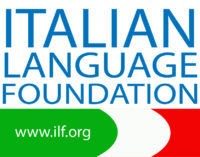By Gabriel Harmetz
Everybody knows that family plays a particularly important role in Italian society. However, there is a second nucleus which is just as central in the life of every Italian: one’s group of friends.
Most Italians have an extroverted and sunny disposition, and friendship is of the outmost importance to them, even in their adult life. They are not as career-obsessed, and typically try to balance work with family and social life.
While Americans often build their closest friendships in college, most Italians regard childhood friends as their best friends.
The reason for this is probably that most Italians attend college just a few miles from where they grow up, and live with their parents rather than moving into a campus, which makes it easy to maintain old friendships. These friends know everything about you and they are almost like siblings.
Most people in Italy tend to have groups of friends that are mixed-gender starting around 5th or 6th grade, while here in the U.S. boys and girls often gravitate in separate circles until the end of high school.
The last and most obvious difference is more noticeable among adults, and it is the degree of spontaneity. In Italy it is seen as absolutely normal even for busy professionals to make last-minute plans to meet a friend for coffee or a drink – something that would hardly ever happen here, especially in Manhattan!





